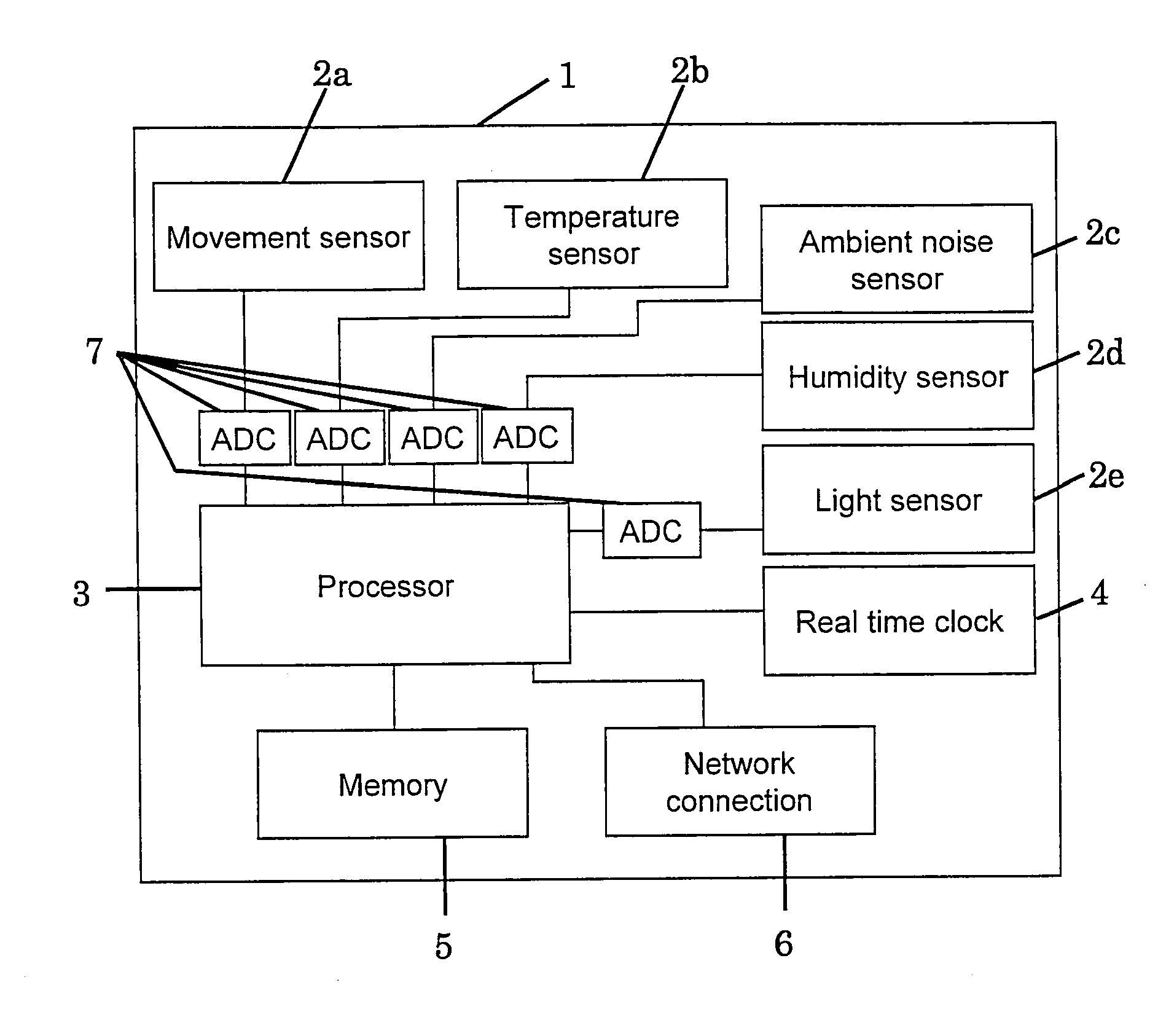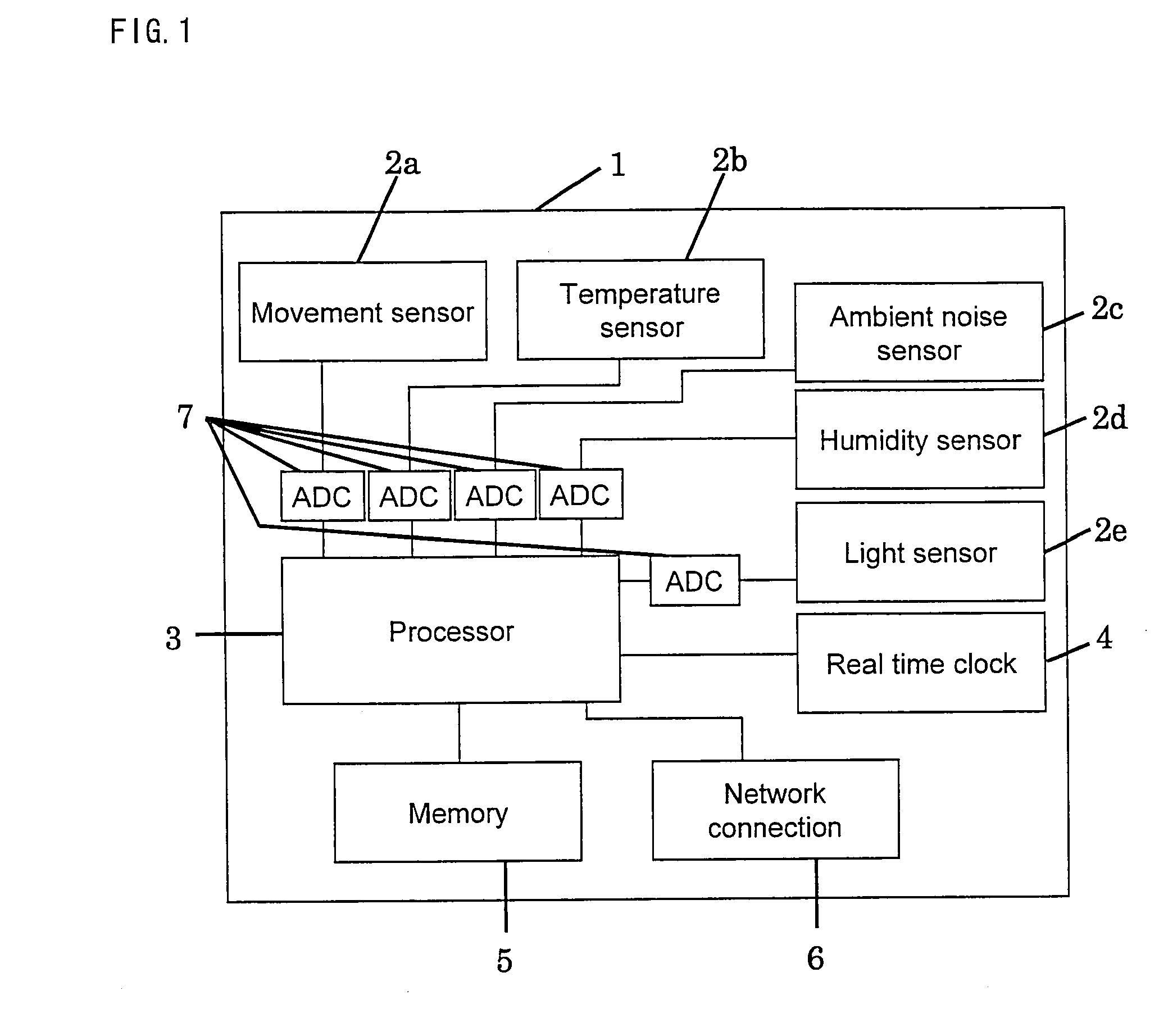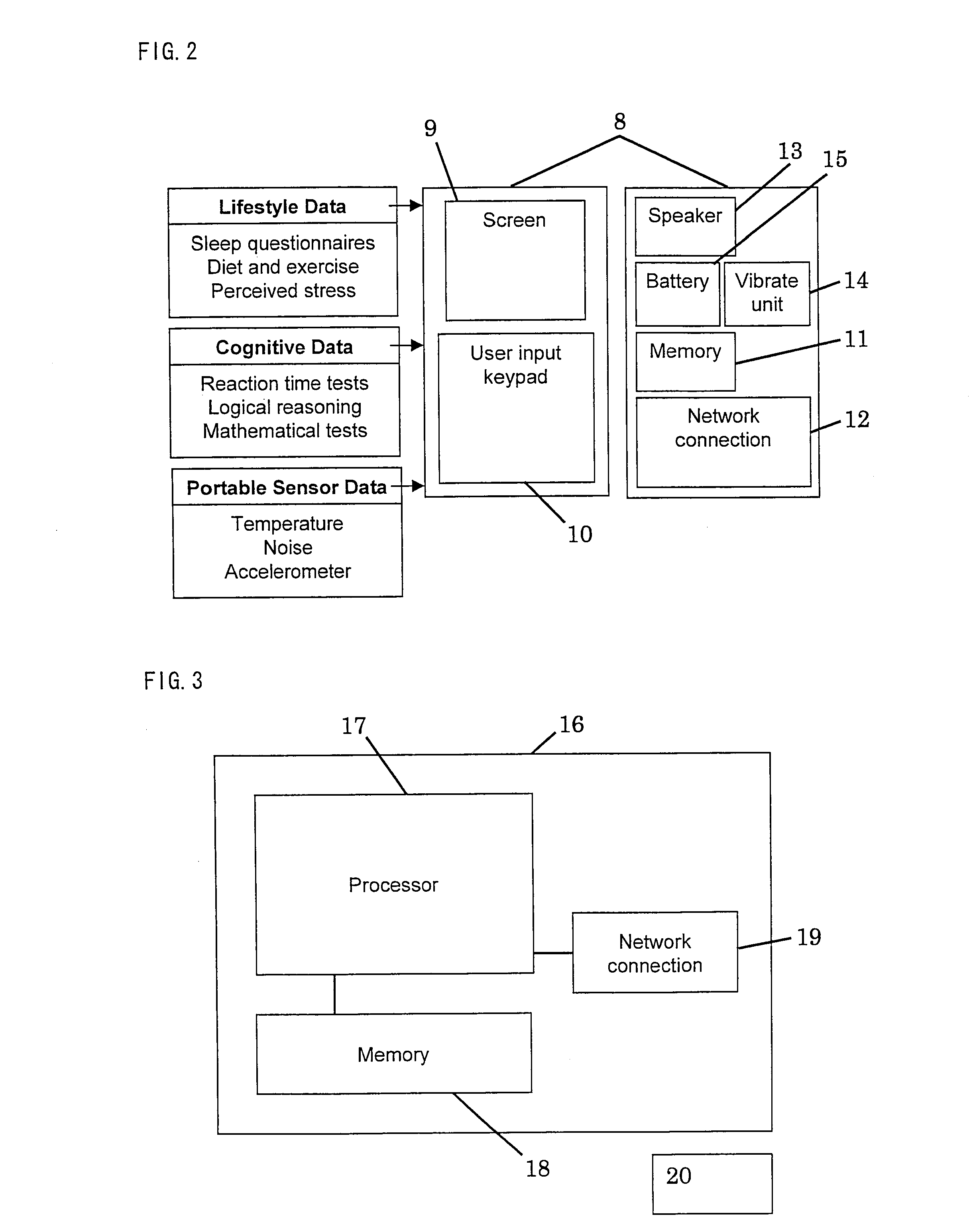Method and system for managing a user's sleep
a technology for managing and managing users' sleep, applied in the field of system and method for managing users' sleep, can solve the problems of major unaddressed sleeplessness and fatigue, poorer quality of life, lack of sleep,
- Summary
- Abstract
- Description
- Claims
- Application Information
AI Technical Summary
Benefits of technology
Problems solved by technology
Method used
Image
Examples
embodiment 1
[0180]A system that returns a daily sleep or sleep quality metric and a cognitive and / or psychomotor performance metric, or a combined sleep indicator metric, based on subjective and objective measures of a user's sleep parameters, after detailed monitoring over a period of time.
[0181]Each day sensors monitor objective physiological and environmental parameters (movement, temperature and light), whilst the user is asleep. The user enters subjective sleep data via questionnaires and / or an electronic sleep diary when awake using the portable user interaction device.
[0182]The user further uses the portable user interaction device to objectively measure their performance when awake via cognitive and / or psychomotor performance tests. Multiple measures of cognitive and / or psychomotor performance whilst the user is awake allow the circadian rhythm of the subject to be detailed.
[0183]The results of subjective and objective measures of sleep recorded whilst the user was awake and asleep are ...
embodiment 2
[0194]A system as in embodiment 1 where the user decides that they would like assistance in order to condition their behaviour in order to improve their quality of sleep.
[0195]The portable user interaction device can be utilised in order to provide assistance in guiding the behaviour of the user, therefore helping them to comply with their desired sleep / wake schedule or improve their sleep hygiene.
[0196]For example, the user may decide to try and maintain the sleep schedule they have when working on their days off. The user can request that the user interaction device displays a message to this effect on the evening before their next day off. The alarm on the portable user interaction device would also automatically go off at the same time as it normally would when the user was working.
[0197]In another example, the user may decide to employ the portable user interaction device in order to help them establish a relaxing bedtime routine. An alarm or prompt may instruct the user to beg...
embodiment 3
[0200]A system as in embodiments 1-2 that can monitor the behaviours of two people who share a bed, i.e. couples.
[0201]The system comprises the same environmental and physiological sensors as the individual system, but is adapted to be suitable for two people. There are two portable user interaction devices such that each person can fill out details relevant to their sleep quality at times suitable to each individual. Preferably, the portable user interaction device of one user is identical to the portable user interaction device of the other user.
[0202]The software system is able to correlate information from all sensors and both user interaction devices to provide information on both users' quality of sleep.
[0203]The system can help to identify factors, such as one person moving excessively during the night or differences in circadian rhythms, which may affect the quality of sleep of the individual and / or their partner. Analysis may show a cross-correlation between improving a use...
PUM
 Login to View More
Login to View More Abstract
Description
Claims
Application Information
 Login to View More
Login to View More - R&D
- Intellectual Property
- Life Sciences
- Materials
- Tech Scout
- Unparalleled Data Quality
- Higher Quality Content
- 60% Fewer Hallucinations
Browse by: Latest US Patents, China's latest patents, Technical Efficacy Thesaurus, Application Domain, Technology Topic, Popular Technical Reports.
© 2025 PatSnap. All rights reserved.Legal|Privacy policy|Modern Slavery Act Transparency Statement|Sitemap|About US| Contact US: help@patsnap.com



